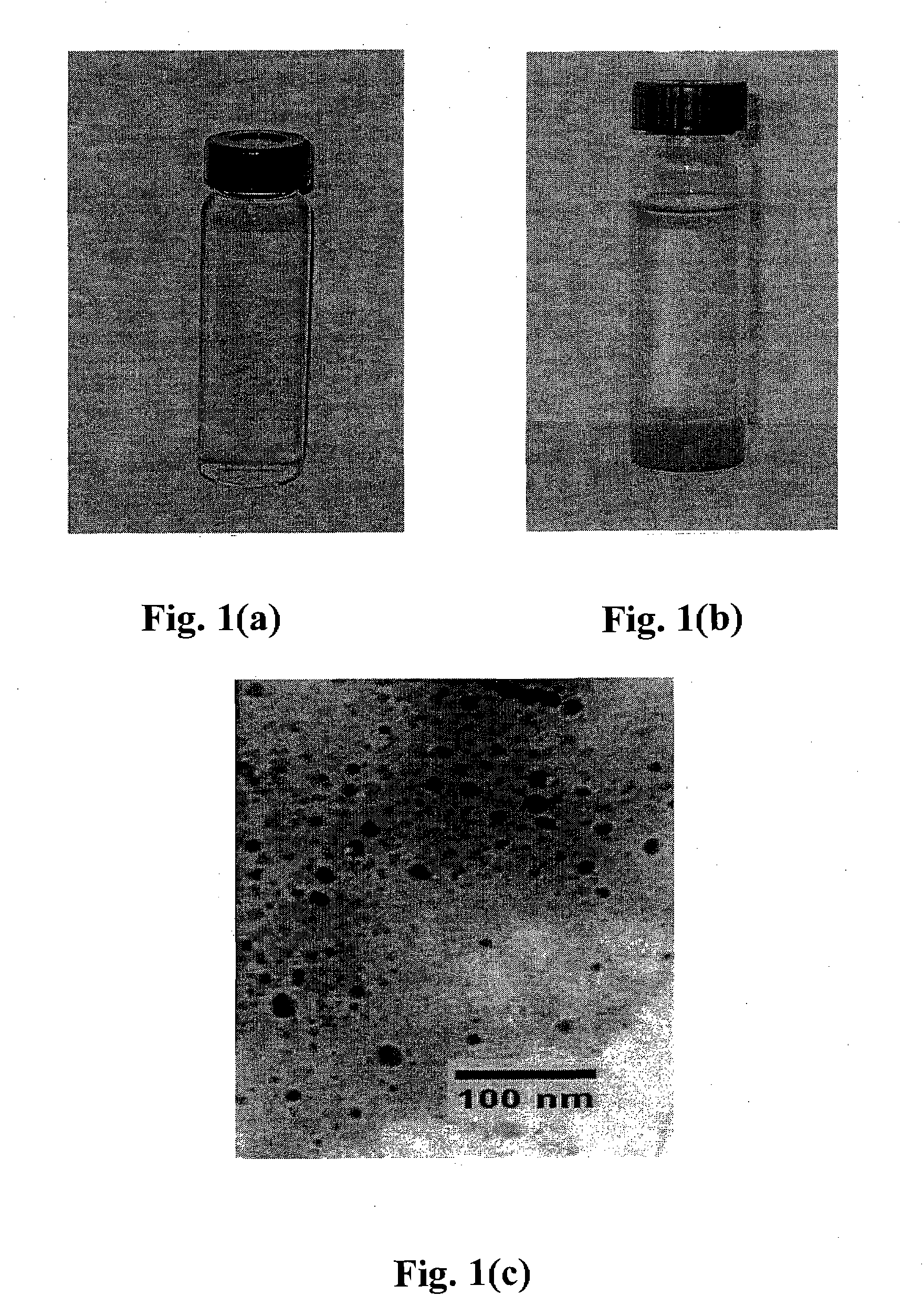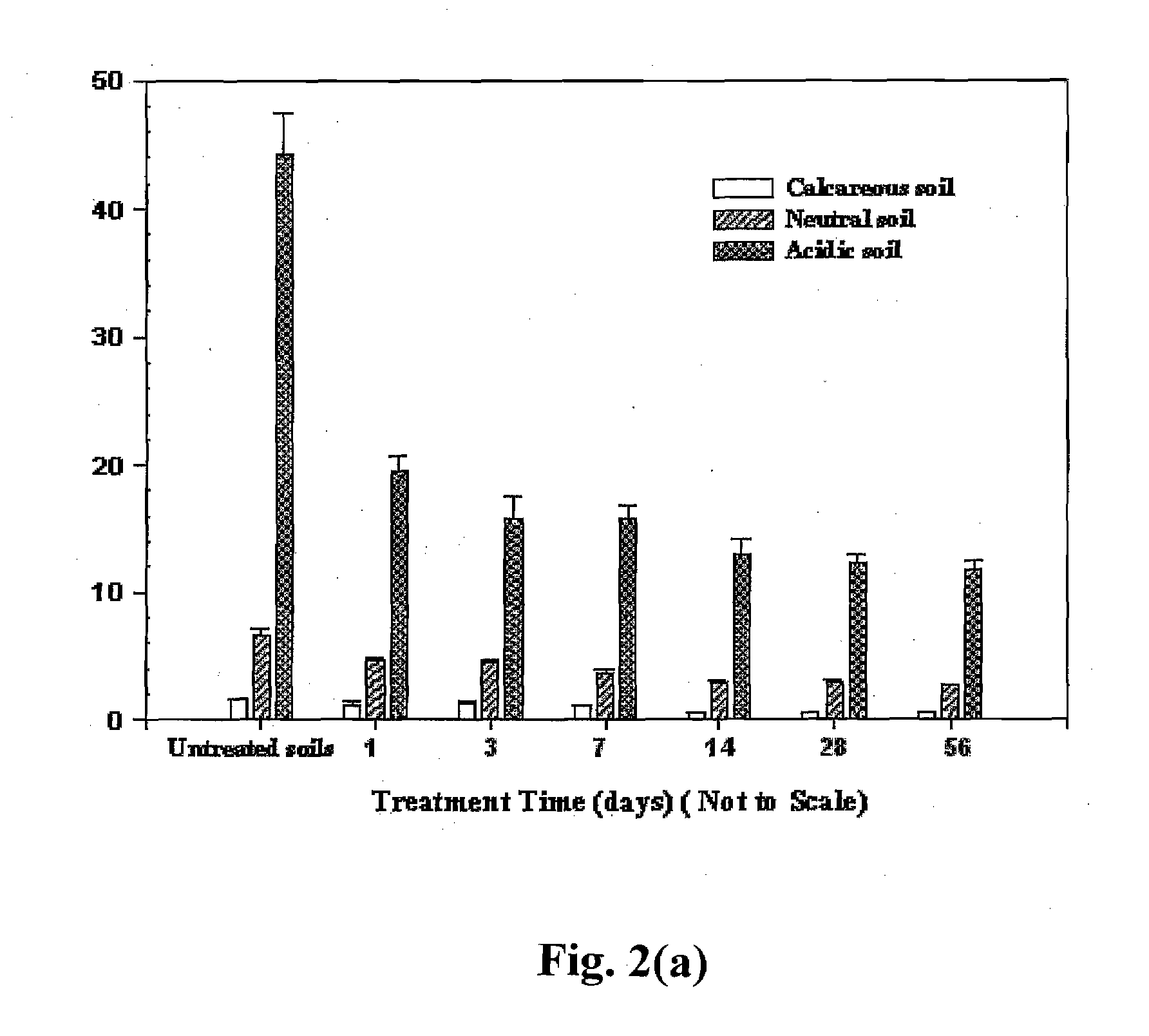In Situ Immobilization of Metals in Contaminated Sites Using Stabilized Nanoparticles
a technology of stabilized nanoparticles and contaminated sites, which is applied in the direction of water treatment compounds, contaminated groundwater/leachate treatment, and mercury compounds, etc., can solve the problems of mercury contamination, enter the environment, and enter the soil,
- Summary
- Abstract
- Description
- Claims
- Application Information
AI Technical Summary
Benefits of technology
Problems solved by technology
Method used
Image
Examples
example 1
1. Introduction
[0074] 1.1 Objectives
[0075] The overall goal of this experiment is to prepare and test a new class of CMC-stabilized iron phosphate nanoparticles for immobilizing Pb2+ in soils and / or solid and hazardous wastes. The specific objectives are to: 1) prepare a new class of iron phosphate nanoparticles with CMC as a stabilizer; 2) test effectiveness of the nanoparticles for reducing the leachability of Pb2+ in three representative soils; and 3) determine effects of soil type, treatment contact time (aging), and chloride on Pb2+ immobilization efficiency; and 4) probe speciation of soil-bound Pb2+ before and after the nanoparticle amendment.
[0076] 1.2 Brief Summary of Results
[0077] A new class of iron phosphate (vivianite) nanoparticles synthesized with sodium carboxymethyl cellulose (CMC) as a stabilizer for in situ immobilization of lead (Pb2+) in soils was prepared and tested. Batch test results showed that the CMC-stabilized nanoparticles can effectively reduce the...
example 2
I. Introduction
[0129] The objectives of this experiment are to synthesis a stable and dispersive iron sulfide nanoparticles using a low-cost, food-grade polysaccharides (e.g. cellulose) as effective and “green” stabilizers to yield FeS nanoparticles suitable for the in-situ injection uses and to use them as an in-situ remediation technology for mercury immobilization in soil or sediment. The specific goals include 1) to synthesize a new class of FeS nanoparticles using carboxylmethyl cellulose as a stabilizer; 2) to characterize FeS nanoparticles; 3) to study the mobility of FeS nanoparticles in sediment; 4) to investigate the efficiency of mercury immobilization by using FeS nanoparticles in sediment.
II. Materials and Methods
[0130] Chemicals used. The following chemicals were used as received: iron(II) sulfate heptahydrate (FeSO4.7H2O, Acros Organics, Morris Plains, N.J.); mercury nitrate (Hg(NO3)2.7H2O); sodium carboxymethyl cellulose salt (NaCMC, Average MW 90,000, DS=0.7, A...
example 3
[0157] FeS nanoparticles were prepared following the procedure of Example 2 except at a concentration of 0.5 g / L FeS particles in water, both in the absence of NaCMC stabilizer and the presence of 0. 1%(w / w) of NaCMC. FIGS. 11(a) and 11(b) show that the presence of cellulose (NaCMC) can fundamentally alter the dispersibility / stability of the FeS particles. While non-capped FeS precipitate (FIG. 11(a)) in a few minutes (thereby losing mobility), capped FeS particles remain fully dispersed in water for days (FIG. 11(b)). When kept in sealed vials, the stabilized nanoparticles remain fully suspended for weeks.
[0158] FIGS. 12(a) and 12(b) show that a dispersion of 0.5 g / L FeS nanoparticles stabilized with 0.1% (w / w) of NaCMC can be fully dispersed by gravity in a loomy-sandy soil. FIG. 12(a) shows the mobility of the FeS particles after 1 minute while FIG. 12(b) shows the FeS particles fully dispersed after 20 minutes. In contrast, FIG. 12(c) shows that 0.5 g / L of non-stabilized FeS pa...
PUM
| Property | Measurement | Unit |
|---|---|---|
| Percent by mass | aaaaa | aaaaa |
| Percent by mass | aaaaa | aaaaa |
| Percent by mass | aaaaa | aaaaa |
Abstract
Description
Claims
Application Information
 Login to View More
Login to View More - R&D
- Intellectual Property
- Life Sciences
- Materials
- Tech Scout
- Unparalleled Data Quality
- Higher Quality Content
- 60% Fewer Hallucinations
Browse by: Latest US Patents, China's latest patents, Technical Efficacy Thesaurus, Application Domain, Technology Topic, Popular Technical Reports.
© 2025 PatSnap. All rights reserved.Legal|Privacy policy|Modern Slavery Act Transparency Statement|Sitemap|About US| Contact US: help@patsnap.com



